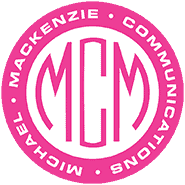Back when everyone read Kotler’s marketing textbook and set about defining an approach to the 4 P’s, businesses had marketing plans. The plans specified the who and the what of the business before getting into the sexier issues of how we’re going to do it.
Lately folks seem to have that engine backwards. They’re skipping past the planning stages — where we identify our audience, the value of our product, the competition and our competitive advantage — and running right along to a marketing strategy which sounds suspiciously like quick throw up a web site (no pun intended) and start tweeting about our biz and see who comes runnning.
Tweeting about your beer special may have brought 6 customers in for free pint glass night at Taco Mac (see article in this morning’s AJC), but it certainly isn’t a big enough marketing success to make a difference in your quarterly revenues.
David Armano took the time to draw parallels between application design and social media planning in a witty post that draws humorous analogies to watching MacGyver. He makes an extremely valid point about social media being more than a tool but an entire approach to your business while endorsing the idea that before you dive head first into this new universe and start pontificating about the transparent and customer-centered approach of your business that you take the time to make sure your reality aligns with your on-line identity.
While being honest is important (albeit critical), the other really important issue to address here is one of consistency. If twitter is something you do in your free time, blogging happens occasionally when your PR firm reminds you and facebook has been relegated to your summer intern, you should stop now. It’s not a strategy if you just do it once. That’s called dabbling. If you’re serious about using social media to promote your business, make sure your plan not only identifies which platforms you plan to use and what you plan to use them for but includes a budget (time and money and resource allocation) to keep it going far past the next quarterly sales meeting.


